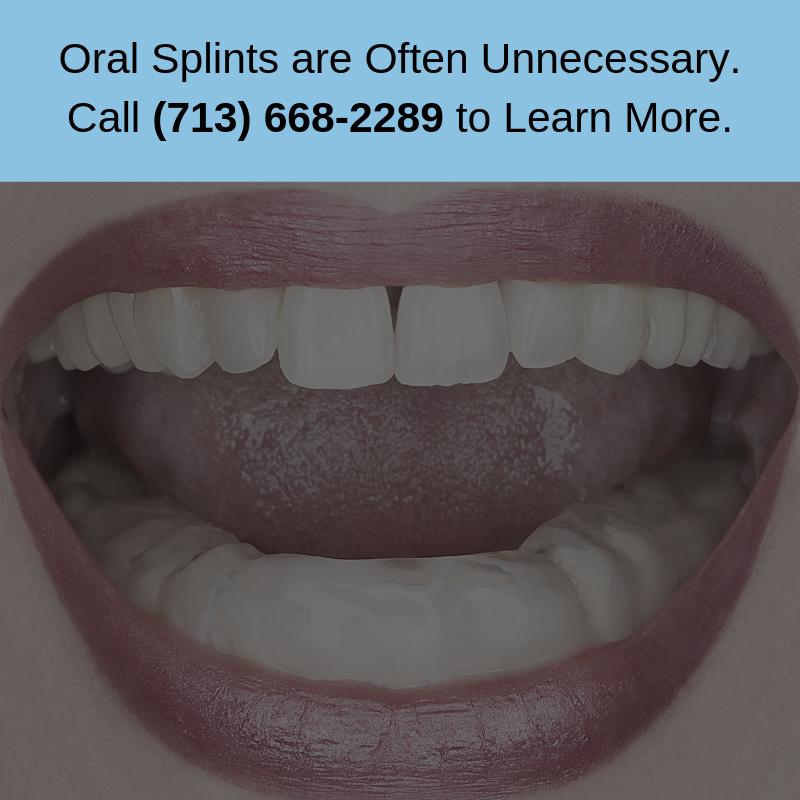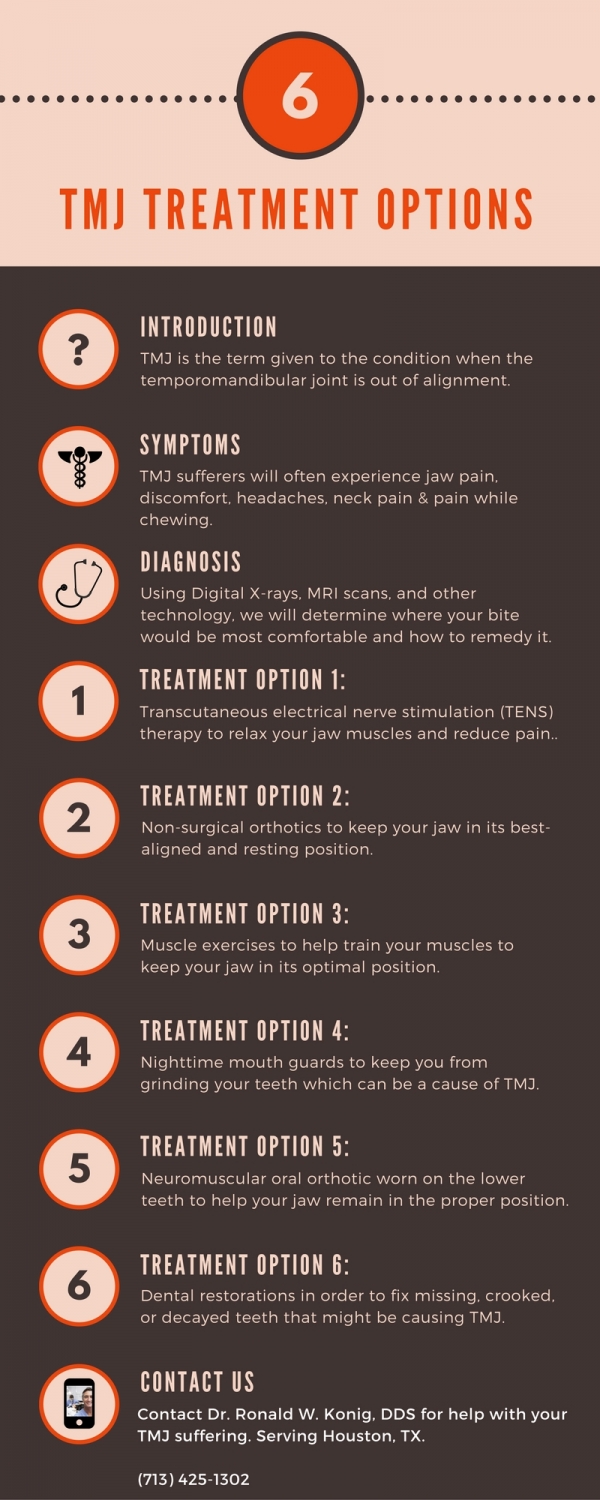Oral splints look similar to sports mouth guards and are often used in the preliminary stages of TMJ treatment. When used in this manner, a TMJ splint may be useful in helping to determine your correct bite alignment. Initial-stage TMJ treatment with an oral splint may take three months or more depending on the extent and cause of your condition.
When designed correctly, TMJ splints gently work to begin realigning your jaw, a process that can relieve a number of TMJ symptoms including:
- Chronic headaches
- Jaw clicking and popping
- Facial pain
TMJ splints may also help reduce risks for broken or worn-down teeth, and can be useful in stopping bruxism (tooth grinding) which is a major contributor to TMJ pain.
Are TMJ Splints Necessary?
Oral splints are often the go-to for initial stage TMJ treatment, leaving some patients to wonder if they will have to wear an oral splint for life. A more compelling question may be, “why was I fitted with a TMJ splint in the first place?”
TMJ splints are placed over the lower teeth only and are intended to begin the realignment process so that your dentist can develop a long-term plan for lasting relief. The problem is, a majority of these types of splints are simply made to an arbitrary bite position with the hopes that it’s close enough to provide a solid start. This works sometimes. Other times, it doesn’t. All too often it makes matters worse.
Problems with occlusal splint therapy include:
- Mandibular displacement
- Unstable occlusion
- Facial pain
Long-term splint use, in particular, increases risks for damage to the mandibular condyle, which can cause serious, even irreversible problems.
Additionally, many people experience problems when wearing a TMJ splint such as difficulties speaking both with and without the splint in place.
Alternatives to Occlusal Splint Therapy
Dr. Konig believes there are better solutions for our TMJ patients. Instead of using guesstimates to create an occlusal splint, he uses advanced technology and his training in physiologic TMJ treatments to develop solutions that are more effective and less intrusive, such as a fixed orthotic, for initial stage TMJ treatment.
Dr. Konig uses computerized muscle reading, electrosonography, 3D imaging, and other advanced technologies to determine the correct position of the bite. From there, he may recommend a fixed orthotic, which looks and feels much more natural than a splint and will not interfere with actions like eating and speaking.
A fixed orthotic can be adjusted as treatment progresses and muscles, joints, and the neck return to a more normal physiologic position. This not only helps the patient feel better, it also gives direction as to the nonsurgical options for the next phase of treatment.
Long-term TMJ treatment seeks to stabilize the jaw in its correct position without the need for orthotics. Dr. Konig is uniquely qualified, highly respected, and exceptionally effective at diagnosing and treating neuromuscular conditions. Voted Houston’s Top TMJ Dentist, Dr. Konig provides innovative and nonsurgical treatments for jaw pain, chronic headaches, and similar discomforts brought about by jaw misalignment. If you are struggling with TMJ pain, he welcomes an opportunity to meet with you, assess your jaw, and help you determine the best course of treatment.
To schedule your consultation with Ronald W. Konig DDS, FAGD, LVIF, please call 713-668-2289 today. Located in Houston, we welcome patients from The Woodlands, Sugar Land, Katy, and all surrounding areas of Texas.



